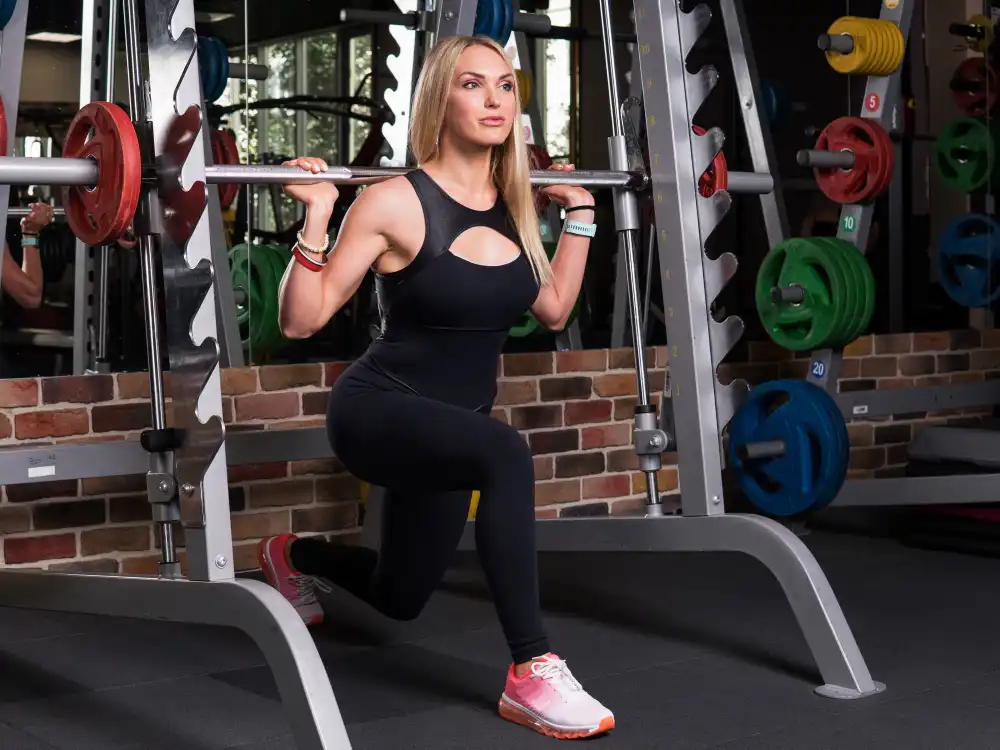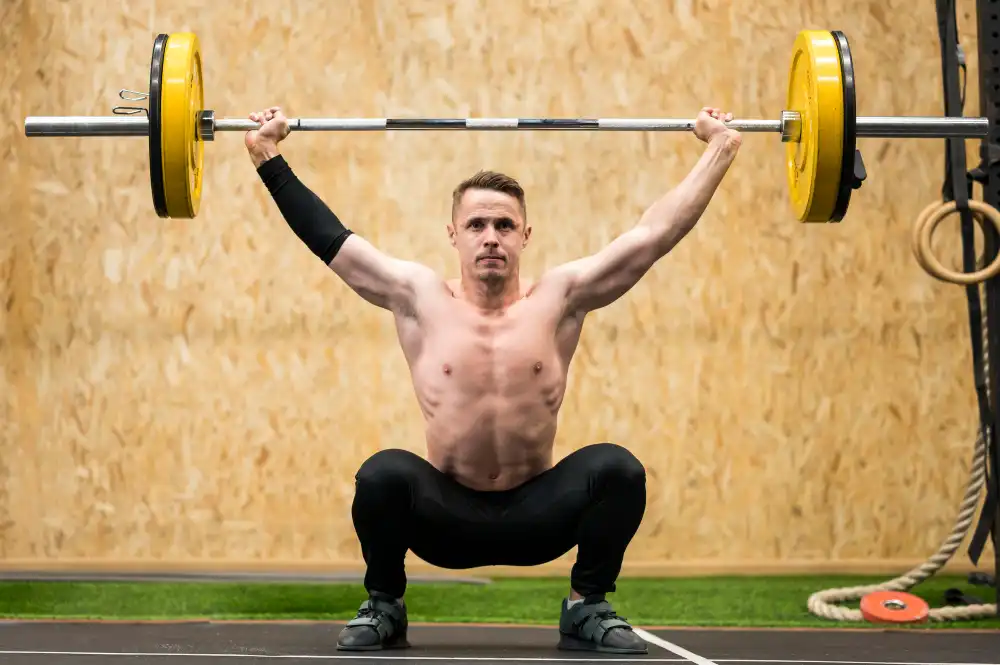A squat rack, power rack or squat cage is a versatile piece of equipment commonly found in most gyms. It consists of four vertical posts with adjustable metal rods, enabling weightlifters to perform squats, deadlifts, and bench presses.
The squat rack is a sturdy support for heavy weights, making it an essential tool for strength training.
In this article, we will share with you ten essential exercises you can do with a squat rack in the gym. These exercises target different muscle groups and can help you build strength and endurance.
We have also included some frequently asked questions related to the topic to provide you with a better understanding of the exercises and their benefits.

The Top 10 Essential Exercises You Can Do with a Squat Rack:
1. Squats:
Squats are undoubtedly one of the most effective leg exercises and a staple in any strength training routine. The squat rack provides support and stability, making performing squats with heavier weights easier.
Set the pins on the squat rack at an appropriate height and load the barbell with weights. Place the barbell on your shoulders, step under the bar, lift it off the shelf, and perform the squat by bending your knees and lowering your hips until your thighs are parallel to the ground. Push through your heels to return to the standing position.
2. Shoulder Press:
The squat rack can also be used for shoulder presses, which target your shoulder muscles. Adjust the pins on the squat rack to your desired height, load the barbell with weights, and place it at shoulder height. Stand under the bar, rest it on your shoulders, and position your hands shoulder-width apart.
Press the bar up and overhead, lock your arms at the top, and lower the bar back to the starting position.
3. Bench Press:
The bench press is another popular exercise that can be performed using a squat rack. Set the pins on the rack so you can comfortably lie down and grip the bar with your hands shoulder-width apart. Load the bar with weights and lie on the bench, ensuring your eyes are under the bar.
Lift the bar off the rack, lower it towards your chest, and then push it back up until your arms are straight.
4. Bent-Over Rows:
Bent-over rows are a compound exercise that targets multiple muscle groups, including your back, arms, and core. Set the pins on the squat rack at waist height and place the barbell on them. Stand a few feet from the rack and grip the bar with an overhand grip.
Keep your back straight and bend your knees slightly. Lift the bar towards your chest by pulling your elbows back. Lower it back down and repeat.
5. Deadlifts:
Deadlifts are a great way to improve your lower body strength and enhance your athletic performance. Set the pins on the rack to your desired height and load the bar with weights. Stand before the bar, grip it with an overhand or mixed grip, and lift it by extending your hips.
Keep your back straight and your shoulders back throughout the movement. Lower the bar back down to the starting position.
6. Pull-Ups:
Pull-ups are an excellent bodyweight exercise that can challenge your upper body strength. Adjust the pins on the squat rack to a height where you can comfortably hang from the bar. Stand on a box or a bench and grip the bar with an overhand grip.
Pull yourself towards the bar until your chin is over it, and lower yourself back down. If you find pull-ups too challenging, you can use assistance bands or a weight belt to support some of your body weight.
7. Standing Calf Raises:
The squat rack can also help you target your calf muscles with standing calf raises. Set the pins on the rack to a height where the bar is at shoulder level. Stand under the bar with your shoulders touching it, and place the balls of your feet on a block or a step.
Lift the bar off the rack and raise your heels as high as possible. Lower them back down to complete one repetition.
8. Barbell Lunges:
Barbell lunges are an excellent exercise for building leg strength and stability. Set the pins on the rack to your desired height and load the bar with weights.
Step under the bar and rest it on your shoulders. Step out with one leg and lower your body by bending your knees until your thigh is parallel to the ground. Push through your front heel to stand back up, then switch legs.

9. Abdominal Exercises:
You can also use the squat rack to perform various abdominal exercises, such as hanging leg raises and knee raises.
Adjust the pins on the rack to a height where you can hang from the bar with your arms fully extended. Grip the bar with an overhand grip and raise your legs or knees towards your chest. Slowly lower them back down and repeat.
10. Dead Hangs:
Dead hangs are a simple exercise that can help you improve grip strength shoulder mobility, and decompress your spine.
Adjust the pins on the rack to a comfortable height and hang from the bar for a set period. You can also add a challenge by holding a towel or using one hand at a time.
Conclusion:
The squat rack is a versatile piece of equipment that enables you to perform many exercises and target different muscle groups.
We have shared with you ten essential exercises you can do with a squat rack in the gym. Use proper form and safety measures when using a squat rack to prevent injuries. So, next time you’re at the gym, include some of these exercises for a full-body workout. Happy lifting!
Frequently Asked Questions:
Q: Can I do squats without a squat rack?
A: Although not as ideal, you can do squats without a squat rack by using dumbbells, kettlebells, or a guided squat machine. However, using a squat rack for squats offers more support and allows you to lift heavier weights safely.
Q: How do I know what height to set the pins on the squat rack?
A: The pins should be set at a height where you can comfortably perform the exercise correctly. If the bar is too high or low, it can put unnecessary strain on your body and increase the risk of injury.
Q: Do I need to use the pins on a squat rack for every exercise?
A: No, you do not need to use the pins on the squat rack for exercises like pull-ups or dead hangs. However, for exercises where you are lifting free weights, using the pins for safety is essential.
Q: How often should I use the squat rack in my workout routine?
A: It depends on your training goals and the exercises you are performing. However, incorporating different squat rack exercises into your routine 2-3 times a week is a good starting point.
Q: How much weight can a squat rack hold?
A: It depends on the brand and quality of the squat rack. Most commercial squat racks can hold up to 1,000 pounds, while some home versions may not hold as much weight. Always check the weight limit before loading the bar.

